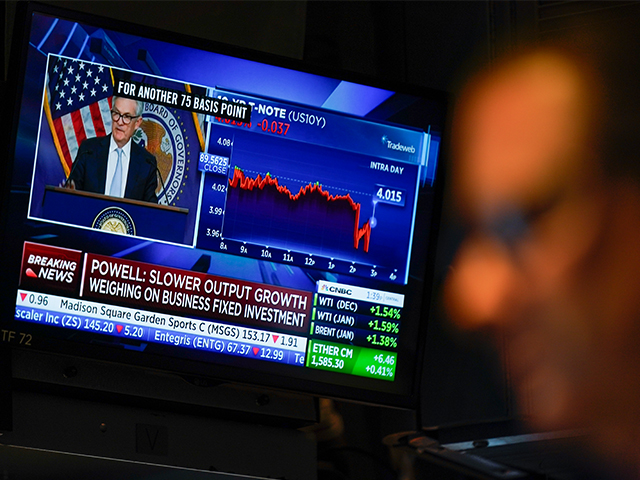Welcome to 2023.
It was exactly one year ago that the S&P 500 hit its peak, closing at a record high of nearly 4,800. The broad index is down nearly 21 percent since that peak. The 19.4 percent decline for all of 2022 makes it the worst calendar year since 2009. If you count just from the January 3rd peak to the October trough, the market fell by slightly more than 25 percent.
The traditional diversification strategy of putting 60 percent of your portfolio in stocks and 40 percent in bonds was not much help last year. Government bonds sank something like 18.3 percent for the year and investment grade corporate bonds fell by 16.1 percent. A Bloomberg index tracking the 60/40 mix fell by around 17 percent as stocks and bonds fell sharply. Bond prices move in the opposite direction of yields, so the Federal Reserve rate cuts were a massive negative for bonds last year.
There was nowhere to hide. Global equity markets fell by 19.8 percent, according to analysts at Bank of America. That’s the worst performance since 2008. They had been down by as much as 27 percent before the fourth-quarter rally.

Traders work on the floor at the New York Stock Exchange as the Federal Reserve chairman Jerome Powell speaks after announcing a rate increase in New York, Wednesday, Nov. 2, 2022. (AP Photo/Seth Wenig)
We begin the new year with widespread expectations of a recession. According to a survey by the Wall Street Journal, more than two-thirds of economists at 23 major financial institutions are forecasting a recession in 2023. Some of those not forecasting a recession next year simply believe it will take more time and are forecasting a 2024 recession. Kristalina Georgieva, the head of the International Monetary Fund, says that nearly one-third of the world economy will be in a recession next year. For good measure, she adds: “Even countries that are not in recession, it would feel like recession for hundreds of millions of people.”
Michael Burry, the investor made famous by the Michael Lewis book The Big Short and the film version in which he was portrayed by Christian Bale, takes it a step further. Around a half hour before midnight on the first day of the year, Burry tweeted out his prediction that the downturn will bring on a new round of fiscal and monetary stimulus, triggering another spike in inflation, presumably in 2024.
Inflation peaked. But it is not the last peak of this cycle. We are likely to see CPI lower, possibly negative in 2H 2023, and the US in recession by any definition. Fed will cut and government will stimulate. And we will have another inflation spike. It's not hard.
— Cassandra B.C. (@michaeljburry) January 2, 2023
Wall Street seems convinced that Burry is at least half-right. Bond market indicators imply that the Fed will stop short of its current forecast to hike rates above five percent and begin cutting rates in the back half of next year. That is to say, the bond market is fighting the Fed. Underlying these prices is the view that inflation is likely to come down rapidly enough to allow the Fed to attempt to rescue the economy from the looming recession with rate cuts.
This would, in theory, be good for both stocks and bonds, playing out 2022’s correlated move in reverse. Wall Street is pretty convinced next year will be a good year for government bonds. Michael Hartnett of Bank of America has pointed out that government bonds have lost value for two straight years. Three straight years of losses have never occurred—so history suggests gain. On stocks, however, Wall Street is intensely bearish still. Of course, overwhelming bearishness among Wall Street analysts is historically a contrary indicator.
The view that the Fed will cut because inflation will fade rapidly may be overly simplistic. Fed officials—particularly Chairman Jerome Powell—are acutely aware of past episodes in which the Fed reversed course in an anti-inflationary rate cycle too early, triggering even worse inflation. Powell may prove more hawkish than markets expect. And the economic data may continue to show the economy is extremely volatile rather than smoothly sliding into a slump. The latest evidence for this came from the November construction spending number, which unexpectedly showed spending growing—in part because of surge in spending on manufacturing facilities. That followed a report released 15 minutes earlier by S&P Global indicating the worst slump in manufacturing since May 2020.
Last year began with a consensus about markets, economic growth, and inflation that was wrong in every important aspect. It’s worth considering that this year’s consensus might not be any better.

COMMENTS
Please let us know if you're having issues with commenting.